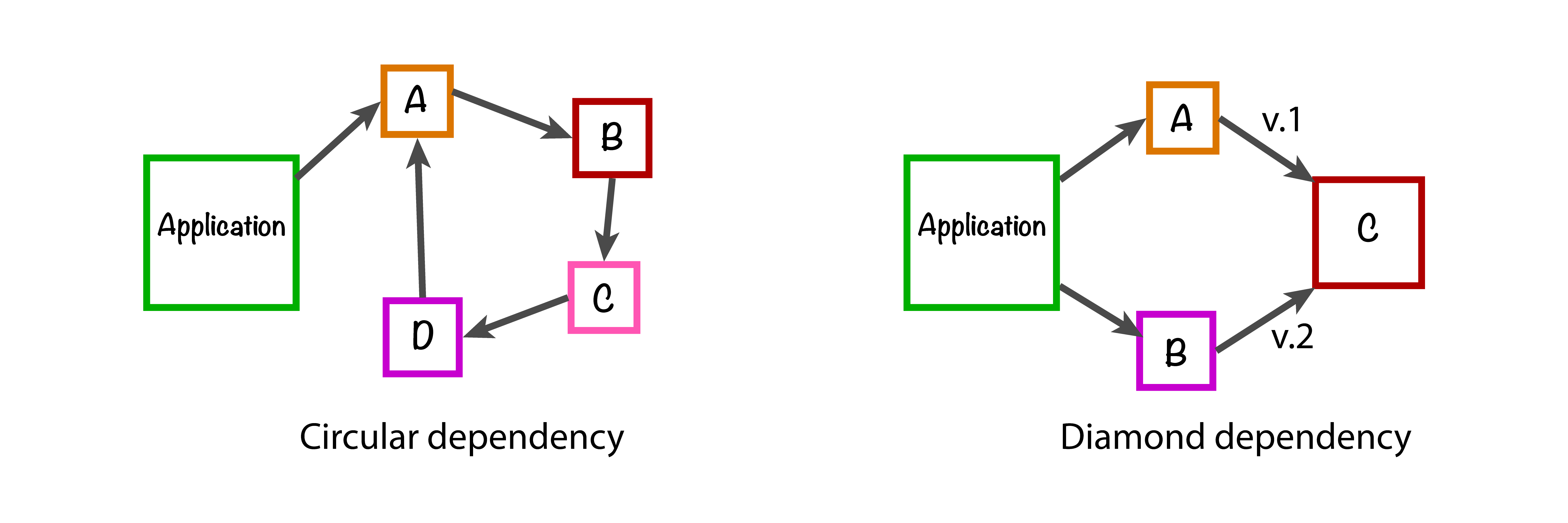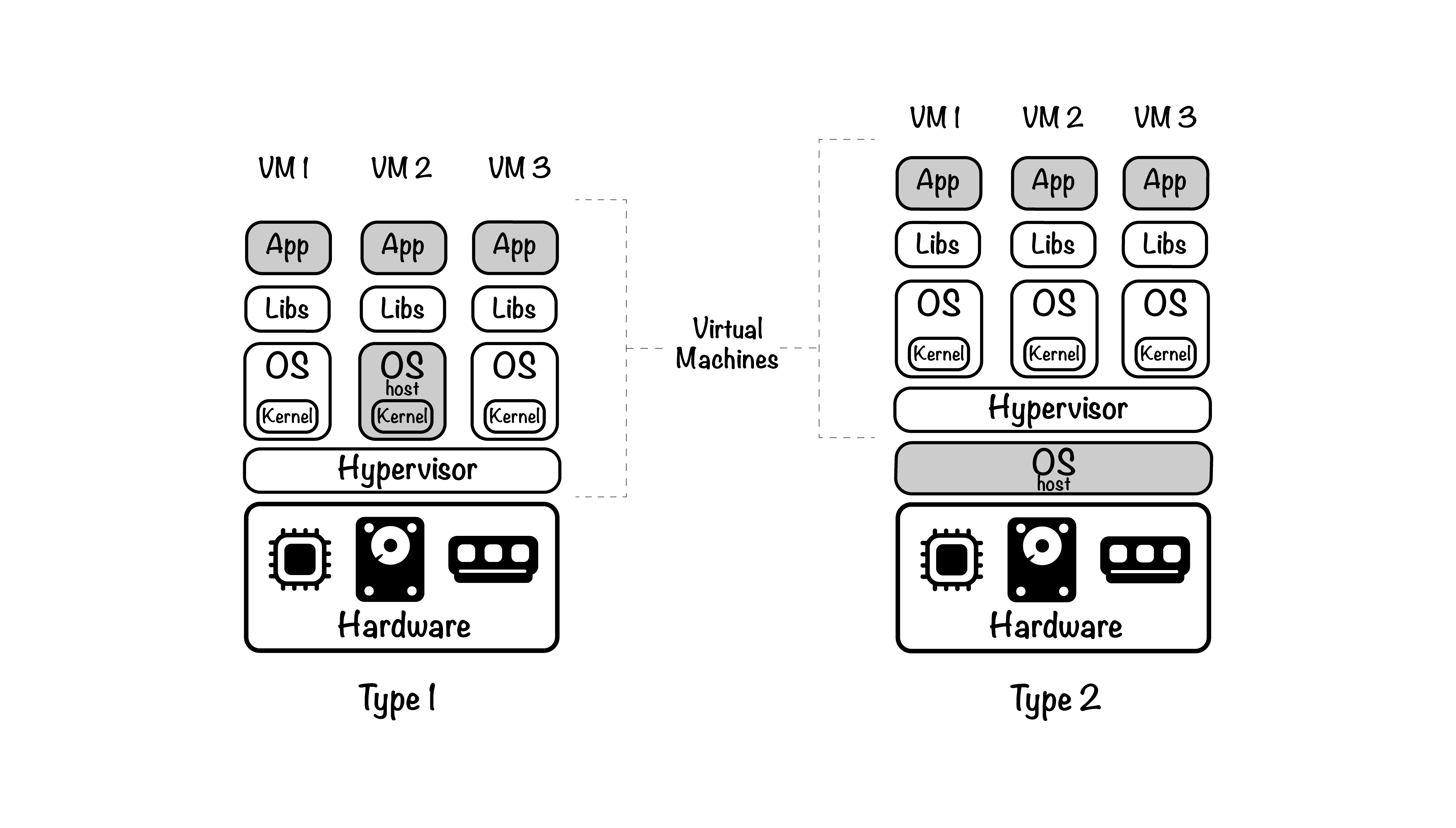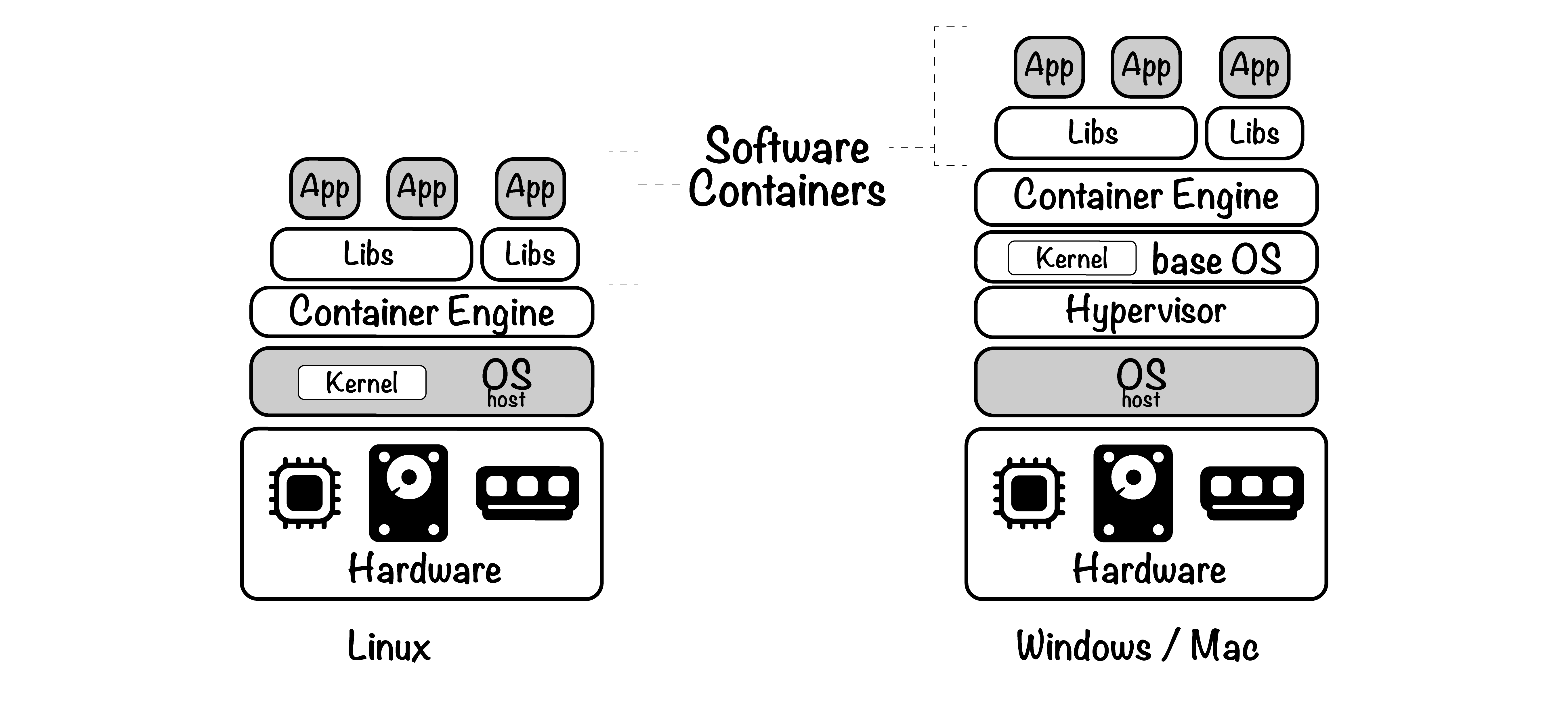Software Containers in HPC: What and Why
Overview
Teaching: 20 min
Exercises: 0 minQuestions
What are software containers?
How are containers different from Virtual Machines?
What is the container runtime landscape?
Objectives
Learn the basic ideas and concepts behind software containers.
Learn about the difference between containers and Virtual machines.
Learn about the most popular container solutions.
Let us begin the lesson with a discussion of why we need software containers in HPC.
What problems do they solve?
Can’t we make install (“build”) everything from source?
Can’t we use virtual machines to solve all of our troubles?
What are the differences between these solutions and which one is right for me?
To answer these questions, we need to take a closer look at the challenges we are trying to address
and specifics of the above solutions.
So, let’s get started!
- Updated dependencies / software
- Human factor
The problem related to multiple operating systems is easy to understand and is very common. Imagine that a program works in Windows, so it knows how to use, say, “circles”. In Linux, on the other hand, there are only rectangles, whereas in macOS - only triangles. And if you move that application written as a circle and designed to work with other circles into an environment made of rectangles or triangles – it will simply not function at all!

The second problem – conflicting dependencies – is a bit trickier to avoid as responsible developers never design their applications with conflicting dependencies. What sometimes happens, however, is that an application depends on two completely different packages that on some platforms bring in conflicting, circular, diamond and other “bad” dependencies. Certainly, this does not happen on the platform on which the application is developed, making troubleshooting such issues more difficult. This problem is sometimes referred to as “Dependency hell”.

Finally, the last item on the list – “reproducibility” – is a two-faced problem. Such problems usually happen when you least expect them. For example, when you (or someone else) repeat the simulations, calculations, or analyses that were performed a while back and get different results. This might happen due to a human error (wrong argument, application name, etc.) or due to a “minor” change in a dependency tree, such as a newer or “patched” version of a program or library.
But can’t we solve all of these problems using just virtual machines (VMs)?
Virtual Machines
Virtual machines are full-fledged emulators of real computers and deserve a dedicated lesson on their own. The actual “real” hardware that runs a VM is called a “host” and the emulated machine is called a “guest”. All guest machines are managed by a single hypervisor that ensures that guests can not affect each other and the host system. There are two types of VMs: Type-1 (“bare metal”) and Type-2 (“hosted”) and the main difference between the two is where hypervisor runs. The line between VM types is very blurry because Type-2 hypervisors such as KVM (Kernel-based Virtual Machine) and bhyve effectively transform host OS into a Type-1 hypervisor.

In “bare metal” VMs, hypervisors run on the hardware and provision resources to all operating systems that are launched within them. One of these operating systems is granted special privileges and is called “host” but other than that, it has exactly the same access to the underlying hardware as other OSes.
In “hosted” VMs, the system acts as normal and one operating system (called Host Operating System) has direct access to the hardware. Hypervisor is installed as a program inside of that Host OS and, therefore, any VM has to be created from within that Host OS. Despite that, overhead associated with provisioning access to hardware for VMs is minimal.
Regardless of their type, VMs solve the problem of running software under different operating systems: one can run Linux on a Windows host and vice a versa. However, VMs completely ignore the latter two of the discussed problems. Moreover, they are not very resource efficient as they emulate the entire computer with all of its hardware as well as full-blown operating system. And this is where containers shine!
Rise of containers
You will sometimes hear software containers referred to as “lightweight virtual machines”. Although this definition is not accurate, it highlights their main difference with classical VMs: they are very resource-efficient. So, why is this definition not accurate and why are they so resource-efficient? Container solutions rely on Linux kernel and its features (Namespaces, Control Groups, UnionFS, chroot) to run applications in isolated Linux environments. Here is a schematic illustration of practically any software container solution:

As you can see, the above charts are very similar to that of Type-2 Virtual Machines. The main component of software container solutions is the “Container Engine”. Software container solutions on Linux differ from their counterparts on Windows and macOS in that they use kernel of the host operating system. On Windows and Mac, on the other hand, they require a Virtual Machine that provides them with with access to Linux kernel. These charts also highlights the fact, that all containers inevitably have the same Linux kernel and can emulate Linux environments only! Although this is certainly a limitation when compared to the capabilities of Virtual Machines, this is also an advantage as one no longer needs to emulate a full-blown operating system if all they want is run a simple Linux application! Lower overhead is definitely a big advantage of software containers over Virtual Machines.
Container solutions and Docker
Docker is one of the most widely used software container solutions. But containers solutions such as FreeBSD Jails, Solaris Zones, LXC, LPAR, and lmctfy existed long before Docker. So, why did Docker become so popular?
- Standardization (container format, API, CLI)
- Support for all major platforms
Standardization led to lower adoption barriers and support for all major platforms allowed Docker to quickly grow its community in under 4 years. Moreover, Docker provided a complete toolchain for working with software containers. In the next episode we will learn about the main concepts and commands of Docker.
Key Points
Containers are “ligh-weight virtual machines.”
Not all container solutions are suited for HPC.